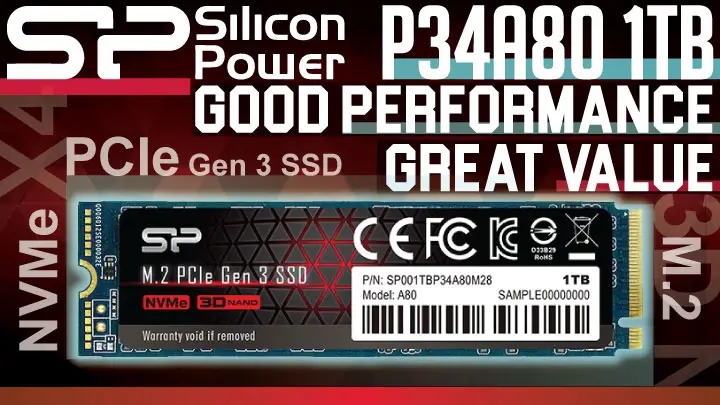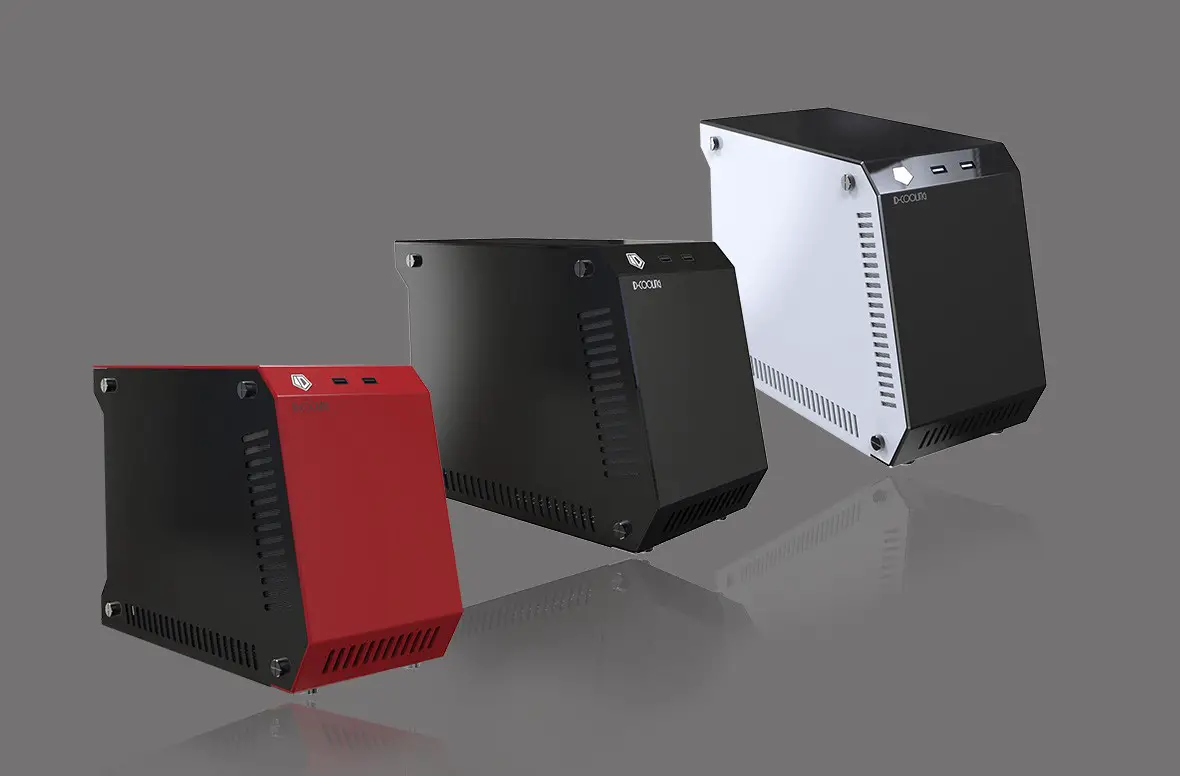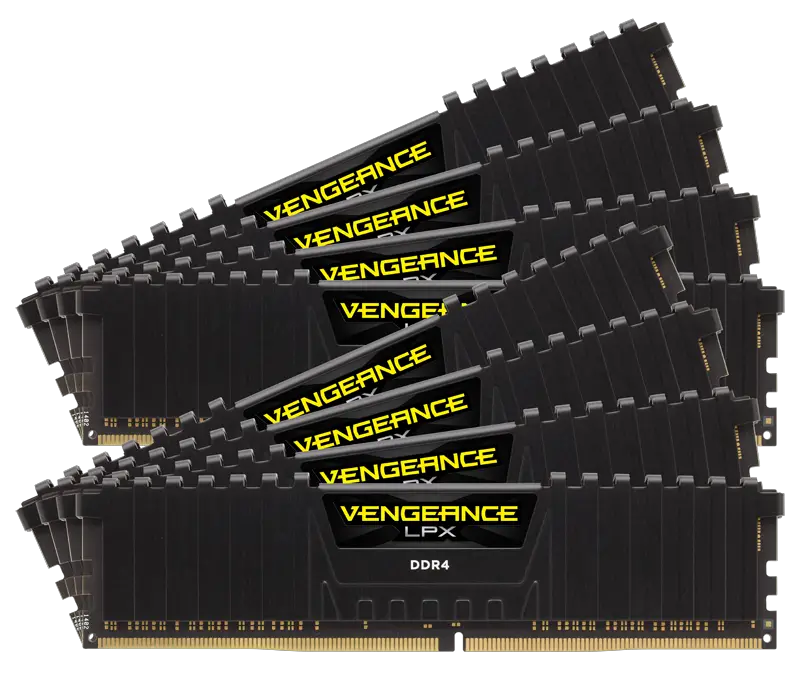![]()
The shipping container is pretty much what you would expect a high-performance M.2 solid state drive to come in. That is to say it is attractive, it quickly tells you why you should buy it, and it even lets you see the drive before purchase.
![]()
The only minor caveat is that Silicon Power does not include any accessories with their new P34A80 series. No instruction pamphlet. No M.2 attachment screw. Nothing but the drive itself. While we are not expecting much, this is taking things a smidgen to far. Of course, if this is how they were able to offer this high-performance drive for $50 less than a Corsair Force MP510 960GB’er (which uses the same controller and NAND)… well then… it is not that hard to find a M.2 screw!
![]()
The Silicon Power P34A80 1TB solid state drive is pretty much a PHISION E12 SSD reference design. This is not a bad thing. By actually listening to the controller manufacture and taking (most of) their advice to heart they were able to sidestep many of the issues that usually plague lesser known companies.
Honestly, unless you are Seagate, Crucial (aka MICRON), Intel, or Samsung… your engineers do not know more than the controller company about the ins and outs of getting the most out of the controller. Trying the ‘think differently’ rarely works, so seeing a reference E12 NVMe design really is not a bad thing to say the least.
![]()
The only main issue buyers should be aware of with PHISON E12 reference designs is the fact that even at lower capacities this is going to be a double-sided M.2 solid state drive. With the lower capacities this usually just means a few low-level components as well an additional RAM IC will be located on the back of the PCB. With the larger capacities – such as the 1TB sample – this also means two NAND ICs will be located on the back of the board. The issue with this is that these are not going to be actively cooled and will be the bottle neck and cause thermal limiting to happen sooner even if you do use a typical M.2 heatsink. In the P34A80’s case, the top of the M.2 card is also not even covered with a heatsink and instead the label covers a thin metallic heat spreader (this is the largest physical difference between the P34A80 and heat sink clad P34M85). As such thermal limiting may be a concern.
Basically, to make a reference design obtain its full potential a bit of care in motherboard selection will be necessary. Either you want to find a ‘vertical’ style M.2 equipped motherboard (where the M.2 card ‘stands up’ and away from the motherboard so that case air flow can reach both sides of the M.2 PCB), or you want an actively cooled M.2 port where air is physically pushed around the card. Now for those who have never seen a reference PHISON E12 design lets break down the P34A80 layout and what this means… and why it is a very, very good design for Silicon Power to have opted for.
![]()
The heart and soul of any NVMe solid state drive is the NAND and controller. Both are important and when paired carefully can offer performance levels that belie the low 18 cent per GB asking price of the P34A80. To be precise the P34A80 uses the PHISON PS5012-E12 8-channel controller (aka ‘E12’ controller) and Toshiba BiCS 3 64-layer TLC memory.
![]()
On the surface opting for 64-layer BiCS 3 instead of the newer 96-layer BiCS4 does seem disappointing. In reality it is a good thing and a bad. Toshiba’s latest and greatest BiCS 4 NAND is technically faster (as toggle 3 based NAND will increase the bus speed to 800MT/s from toggle 2’s 400MT/s that BiCS 3 uses) but with 96 layers heat does become an issue faster and thermal limiting will occur with drives that are not heatsink equipped and/or actively cooled. So in reality while Toshiba’s 64L 3D TLC BiCS3 NAND may be slower than Toshiba’s latest and greatest… when paired with a potent eight channel controller it really is more a case of a theoretical and not really practical real world performance difference. Put another way this TLC NAND is fast enough for PCIe x4 NVMe drives that make use of cutting-edge controllers and can deliver said performance with fewer worries about thermal limiting.
![]()
This is why Silicon Power went out and purchased one of the better controllers available today. The Phison PS5012-E12-27. In simplistic terms, the Phison ‘E12’ controller is the true spiritual successor of the PS5007-E7 (aka ‘E7’ which put Phison on the map) as it is a controller that was designed to take on Intel, Samsung, and all comers in the flagship end of the SSD marketplace. To do this Phison has taken the E7 design and turned the dial all the way to eleven with numerous under the hood improvements that result in true flagship performance for the modern age.
Much like the E7 it is a native PCIE 3.0 x4 design that is built on TSMC’s 28nm manufacture fab process. Unlike the E7, the E12 is a NVMe 1.3 (and not just NVMe 1.1b) based controller that actually harnesses the full power of having access to four full PCIe 3 lanes and the baked-in upgrades to the NVMe standard. The low level enhancements result in over double the rated sequential write performance (3000MB/s vs 1300MB/s) but also double the small file random r/w performance (600K IOPS vs 200K-300K IOPS). Mix in upgraded support for faster DDR4 RAM (instead of just DDR3), and better LDPC w/ Phison’s proprietary ‘StrongECC’ error correction, means that data is now not only faster to access but much more likely to stay readable longer than ever before.
![]()
In order to keep the controller singing along at full-tilt boogey Silicon Power has opted for a pair of 512MB SK HYNIX DDR4-2400 (17-17-17) SDRAM IC’s for a total of 1GB of onboard, uber faster RAM cache. This too is classic PHISON E12 reference design.
Interestingly enough the Silicon Power P34A80 is running ECFM12.1 firmware right out of the box – instead of ECFM11 which most other E12 based models usually come flashed with. Version 12.1 is (at the time of this review) the latest firmware revision for the E12 and does include some low-level tweaking that all but demands you upgrade the drive before using (for example much more aggressive garbage collection to keep performance high via an empty pseudo SLC cache buffer). So seeing the latest firmware already applied at the factory is a very good thing. It means one less firmware flash over the life the P34A80… and one less chance of things going bad. Put another way Silicon Power is one of the few E12 based drives that you can literally take out of the box and start using as an OS drive without having to do pretty much anything to it first.
The only one caveat on the firmware side of the equation is that Silicon Power has tweaked it slightly. PHISON E12’s are designed around having around 6 and quarter percent of the onboard NAND set aside for Over-Provisioning (for example a reference E12 ‘1TB’ is a 960GB SSD with 64GB set-aside for internal use only). Silicon Power does not set aside this amount. The upside to this is that you can store more on this drive than a typical E12… but it does impact performance when pushed hard and long. It also means a lot fewer spare blocks available for when NAND block’s need to be replaced (i.e. get worn out).
While not entirely necessary, after all Silicon Power does feel confident enough to give this bad boy a five-year warranty, we probably would dial this back and only format the drive as a 960GB’er. We do however push our drives harder than the typical user so this is not an absolute requirement. Only you know how hard you push your gear and have to decide if the reduced capacity (and slightly increased cost per GB) is worth it or not. For this review we have not done so and all testing is carried out using the full capacity as recommended by Silicon Power. This actually is the other significant change between the P34A80 and the P34M85 as the later will (if ever released by SP) come in 240, 480, and 960GB capacities.










